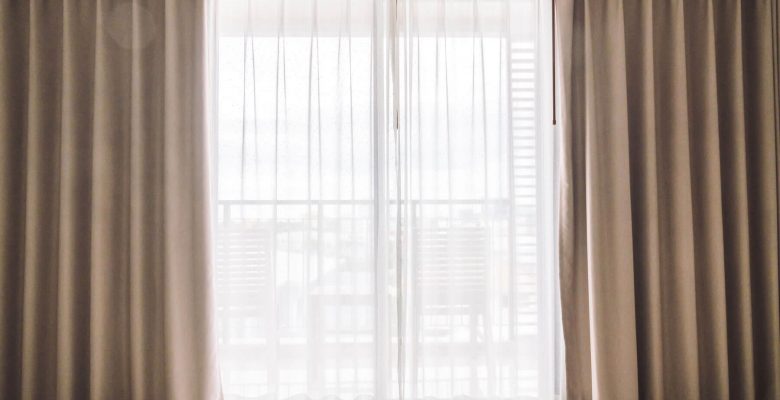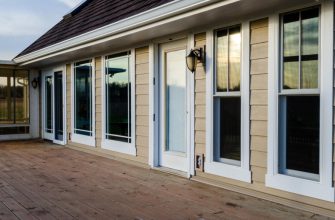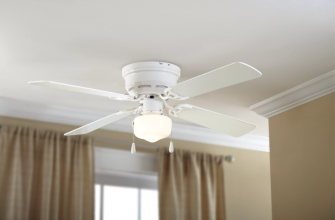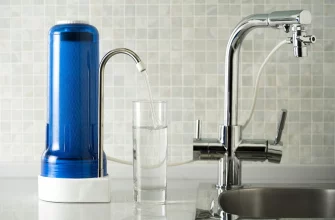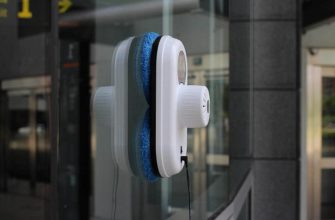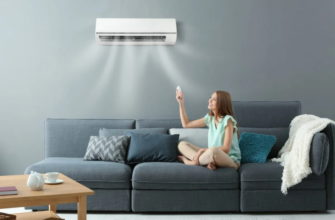Window coverings can make a big difference in any home, but they are especially important in mobile homes. With limited space, choosing the right window treatments is key to creating an attractive and functional living environment.
This comprehensive guide will explore creative window covering ideas tailored specifically for mobile homes. We’ll discuss the unique benefits, important factors to consider when selecting window coverings, and provide inspirational ideas to upgrade your mobile home’s windows.
From customized blinds and shades to decorative films and curtains, there are many innovative options to choose from. We’ll offer tips on proper installation and maintenance as well. By the end, you’ll have fresh inspiration and helpful advice to give your mobile home windows a stylish makeover.
- Benefits of Creative Window Covering Ideas
- Choosing the Right Window Coverings
- Assessing Your Needs and Style
- Evaluating Privacy and Light Control
- Considering Energy Efficiency
- Exploring Aesthetic Options
- Creative Window Covering Ideas
- Utilizing Customized Blinds and Shades
- Exploring Curtains and Drapes
- Considering Innovative Shutters and Screens
- Using Decorative Films and Tinting
- Installation and Maintenance
- Measuring and Installing Window Coverings
- Cleaning and Caring for Different Materials
- Ensuring Safety and Security
- Incorporating Window Coverings into Mobile Home Design
- Coordinating with Interior Decor
- Maximizing Space and Functionality
- Final Thoughts on Creative Window Covering Ideas for Mobile Homes
Benefits of Creative Window Covering Ideas
Investing in creative window treatments offers many advantages for mobile homes. Here are some of the top benefits:
- Enhanced Privacy – Window coverings allow you to control how much you want to reveal to the outside.
- Light & Glare Control – Properly chosen window treatments reduce harsh light and glare for visual comfort.
- Energy Savings – Insulating window coverings trap heat in winter and block solar gain in summer to cut energy costs.
- Noise Reduction – Layered window treatments help block outside noise for a more peaceful indoor environment.
- Visual Appeal – Creative window treatments let you make a design statement and tie together your decor.
With the right window covering ideas, you can transform the look and feel of your mobile home while also enhancing comfort and efficiency. The possibilities are endless!
Choosing the Right Window Coverings
Assessing Your Needs and Style
When selecting new window treatments, the first step is identifying your specific needs and style preferences for each room. Key factors to consider include:
Evaluating Privacy and Light Control
Think about your privacy needs and how much natural light control is desired. Rooms like bedrooms and bathrooms typically require more privacy, while kitchens and living spaces benefit from ample daylight. Opaque shades or insulated curtains can provide privacy and light control.
Considering Energy Efficiency
Energy efficient window coverings like honeycomb shades, thermal drapes and dual pane shutters can help insulate your mobile home. This helps reduce heating and cooling costs.
Exploring Aesthetic Options
There are endless options when it comes to colors, patterns, textures and styles. Consider your mobile home’s existing color scheme, architectural details and decor style as you explore ideas. Coordinate colors and patterns for a cohesive look.
Prioritizing your functional needs and aesthetic taste will help narrow down suitable window covering solutions for each room.
Creative Window Covering Ideas
Utilizing Customized Blinds and Shades
Custom-made roller shades, Venetian blinds, honeycomb shades and other specialty shades offer convenience, style and functionality. Some creative ideas include:
- Faux wood blinds – Mimic the look of real wood with composite materials that are moisture-resistant.
- Patterned roller shades – Choose vibrant colors or patterns like stripes, florals and geometrics.
- Motorized shades – Enjoy push button light control and privacy with battery operated motors.
- Cordless shades – Eliminate dangling cords for enhanced safety and a sleek look.
Exploring Curtains and Drapes
From breezy sheers to thick insulated drapes, curtain options are plentiful. Inspiring ideas include:
- Layered looks – Combine complementary drapes, valances, swags and tiebacks for dimension.
- Thermal blackout curtains – Block light and insulate windows in one stylish solution.
- Cafe-style curtains – Cover lower half of window while letting light filter through the top half.
- Eclectic patterns and textures – Mix and match patterns, fabrics and trims for a custom look.
Considering Innovative Shutters and Screens
Shutters add architectural detail while screens allow natural air flow. Unique options like:
- Accordion shutters – Folding panels stack neatly to the side when open.
- Perforated shutters – Small holes filter light while maintaining privacy.
- Roll-down screens – Retractable screens disappear when not needed.
- Patterned screening – Choose bold or neutral hues for added visual interest.
Using Decorative Films and Tinting
Innovative window films and tints offer privacy, insulation, and style. Consider:
- Stained glass films – Create the look of expensive glass art at a fraction of the cost.
- Two-way mirrored film – See out, but blocks visibility from the exterior.
- Color gradient film – Darkens windows with a fade effect.
- Etched glass film – Simulates the look of sandblasted or acid-etched glass.
The options for window treatments are vast, so explore all the possibilities before deciding what meets your mobile home’s needs.
Installation and Maintenance
Measuring and Installing Window Coverings
Carefully measure each window opening before purchasing window treatments. Note the exact width, height and depth of the openings. Follow individual product instructions for proper installation. Here are some general tips:
- Mount window treatments high and wide to maximize visibility and light.
- Use the appropriate hardware for your window type and wall materials.
- Make sure blinds and shades are level by measuring evenly on both sides.
- For film and tint, thoroughly clean windows and apply smoothly to avoid bubbles and wrinkles.
Cleaning and Caring for Different Materials
Regular cleaning and care helps window treatments last. Recommendations vary by material:
- Wood blinds – Dust gently with a soft cloth. Spot clean stains with mild soap and water.
- Faux wood blinds – Vacuum dust buildup with a brush attachment. Spot clean with water and mild detergent.
- Aluminum blinds – Vacuum gently with a soft brush. Spot clean by dampening a cloth with water or mild cleaner.
- Shades – Dust gently with a feather duster. Spot clean stains carefully with mild soap and water.
- Curtains and drapes – Check tags for washing instructions. Machine washgently in cold water or spot clean stains by dabbing with a mild detergent solution.
- Shutters – Dust panels with a soft cloth. Spot clean with mild soap and water. Avoid harsh cleaners.
- Window films – Use a soft, damp microfiber cloth to gently remove dust and dirt. Do not use harsh chemicals or abrasives.
Ensuring Safety and Security
It’s important window treatments are properly maintained for safety and security reasons. Follow these tips:
- Check cords and drawstrings regularly to ensure they are in good condition, with no fraying or damage.
- Use cord cleats, ties and other safety devices to keep cords out of reach of children and pets.
- Do routine checks to make sure blinds, shades and screens are secure in their tracks or mounting brackets.
- Close shutters, blinds and curtains at night for privacy and to deter break-ins.
By keeping window treatments in good working order, you ensure safety while also extending their lifespan.
Incorporating Window Coverings into Mobile Home Design
Coordinating with Interior Decor
An important part of choosing window treatments is making sure they coordinate well with the rest of your interior decor. Consider the following:
- Select window covering colors and patterns that complement your existing color scheme.
- If redecorating, use your new window treatments to inspire the room’s color palette.
- Mix and match styles between rooms or use the same window treatments throughout for consistency.
- Tie everything together with complementary drapery, valances, trim and hardware.
Maximizing Space and Functionality
Carefully selected window treatments can make a small mobile home feel more spacious while adding functionality:
- Floor-length curtains and drapes can draw eyes upwards, creating the illusion of higher ceilings.
- Valances and cornices extend the window visually for a wider appearance.
- Sheer curtains filter light while allowing views and can extend window height when hung high.
- Blinds and shades can stack tightly to the side, saving precious space when open.
With some clever planning, window treatments can enhance both aesthetics and functionality.
Final Thoughts on Creative Window Covering Ideas for Mobile Homes
As we’ve explored, mobile homes offer unique design challenges when it comes to windows. But with creativity and the right window treatment solutions, you can control light and privacy while making a statement.
Focus on identifying your functional needs then explore the many options to match your personal tastes. Specialty shades, insulated drapes, decorative films and more can completely transform the look and feel of your mobile home.
By taking advantage of customization options and innovating technologies, even small windows can become an asset. Your new window treatments will not only be beautiful but will improve your indoor comfort and efficiency.
Hopefully this guide has opened your eyes to the possibilities. It’s time to think creatively about window coverings to enhance your mobile home decor and functionality!

